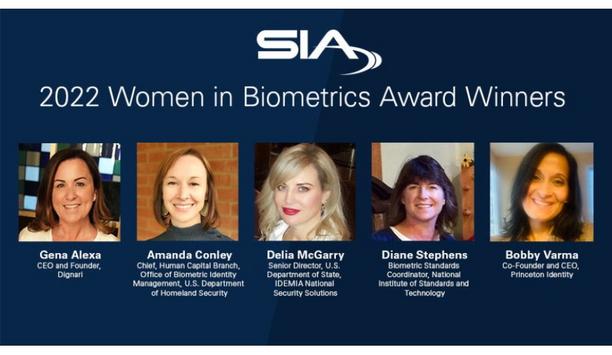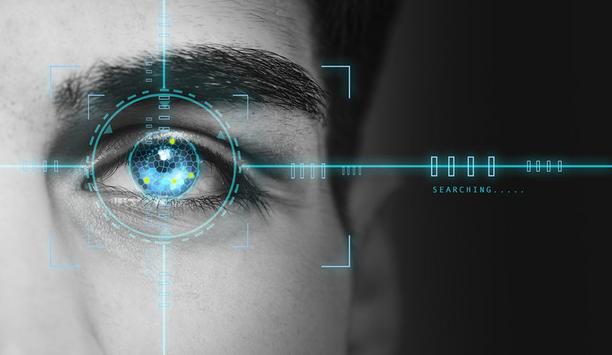Princeton Identity - Experts & Thought Leaders
Latest Princeton Identity news & announcements
Princeton Identity (PI), a foremost developer of iris and face biometric identity solutions, has released a whitepaper, “Biometrics in Commercial Real Estate: Putting Possibilities into Practice.” This collaborative effort between co-authors Bobby Varma, CEO and Co-Founder of Princeton Identity and Paul Benne, PSP, CPOI, President and Founder of Sentinel Consulting, illuminates the many ways in which biometric identity solutions can contribute to a premium experience for commercial tenants and their visitors. Benne’s firm, which offers risk assessment, security master planning, technical and architectural security design, operations and training, counts many of the nation’s most prestigious and iconic commercial properties as clients. Addressing various topics of interest The whitepaper addresses various topics of interest to real estate developers and management companies. They include: building public trust in the technology, best practices for implementation, choosing a suitable modality, prioritising applications and considerations for integration with various solutions, including access control, video surveillance and visitor management. Integrating biometrics with its security and operational applications allows stakeholders to deliver state-of-the-art security As employers struggle to make return-to-office policies more palatable to workers, they are seeking ways to create buildings that feel safer and more welcoming. Integrating biometrics with a number of security and operational applications allows stakeholders to deliver state-of-the-art security, efficiency, automation and convenience. Authority comment “Forward-thinking members of the commercial real estate sector are envisioning ways to enhance the user experience, but are not aware of the many ways in which biometrics can help to achieve their goals." "Paul and I hope that this whitepaper answers some of their questions, demystifies certain misconceptions and plants some seeds regarding the possibilities the technology offers,” said Bobby Varma, CEO of Princeton Identity.
The Security Industry Association (SIA) has named five female biometrics leaders, as recipients of the 2022 SIA Women in Biometrics Awards, a globally recognised programme, presented by SIA, with support from sponsors - IDEMIA and Paravision, along with organisational and media supporters - AVISIAN, Biometric Update, FindBiometrics and SIA’s Identity & Biometric Technology Advisory Board and Women in Security Forum. The 2022 awardees, who will be honoured at the SIA GovSummit 2022, SIA’s annual government security conference, include: Gena Alexa, the Chief Executive Officer (CEO) and Founder, Dignari, LLC Gena Alexa has held key technical and management roles in the delivery of strategic government biometrics programmes for more than 20 years. In 2013, she founded Dignari, LLC, in order to provide programme strategy, human-centered design, emerging technology and data analytics services to the federal government. Oversees the delivery of biometrics and identity programmes Gena Alexa oversees the delivery of biometrics and identity programmes within the DHS Gena Alexa oversees the delivery of biometrics and identity programmes within the U.S. Department of Homeland Security (DHS), Customs and Border Protection (CBP), Transportation Security Administration (TSA) and Department of Defense. Her teams support transformative initiatives, including CBP’s Biometric Entry Exit program and TSA’s Touchless PreCheck. In 2021, Alexa’s team won a 5-year single-award Blanket Purchase Agreement to provide identity, credentialing and access management services across DHS and its component agencies. Prior to Dignari, LLC, Gena Alexa led various aspects of programmes, including TSA Registered Traveller, the European Union’s Entry-Exit Feasibility Study, the Port of Los Angeles Transportation Worker Identification Credential (TWIC) and the CBP Western Hemisphere Travel Initiative. Vast industry experience Gena Alexa began her career as Software Developer and Architect for programmes, including the U.S. Immigration and Naturalization Service’s NEXUS/SENTRI, the Israeli Ministry of Defense’s BASEL Project, US-VISIT, TWIC and TSA Registered Traveller. She holds an MBA degree from George Mason University and a Bachelor’s degree in Business Administration from James Madison University. Amanda Conley, Chief, Human Capital Branch, Office of Biometric Identity Management (OBIM), S. Department of Homeland Security (DHS) Amanda Conley is an experienced human capital leader and professional, who is focused on providing and enabling biometric and identity leadership, innovation and talent sourcing. She is the principal advisor on complex human capital issues impacting the biometrics workforce. Expert researcher of innovative recruitment strategies Amanda Conley is responsible for researching and utilising innovative recruitment strategies Amanda Conley is responsible for researching and utilising innovative recruitment strategies, to augment and diversify DHS OBIM’s talent pool, in order to drive innovation of the biometric identity services delivered across the U.S. government and to DHS mission partners around the world. She is responsible for designing, planning and implementing programs to build biometrics expertise within the OBIM workforce to enable seamless decision support to customers, stakeholders and international partners. During her career, Amanda Conley has been responsible for extensively researching talent sources across the full spectrum of biometric skills, including scientific, mathematics and research skills, to create a bench of successive talent; consulting on information technology, biometrics and professional development programmes; executing programmes to retain subject matter experts; engaging with customer organisations to promote OBIM’s biometric services, while providing educational venues for customers and stakeholders; and partnering with biometric thought leaders, to align the human capital strategy to future technologies and biometric modalities. She holds a Master of Arts degree in industrial/organisational psychology. Delia McGarry, Senior Director, U.S. Department of State, IDEMIA National Security Solutions (NSS) Delia McGarry is a Senior Director and Biometrics Engineer with 26 years of experience in digital image processing and 20 years in biometrics, including experience in federal, industry and academic spaces. She has extensive knowledge of the U.S. Department of State’s identity management and secure credentialing processes and systems, having provided biometrics and image processing subject matter expertise continuously since the inception of the department’s integration of biometrics into the travel document issuance process. Expert in emerging identity management solutions As the Senior Director of IDEMIA NSS’ Face Recognition, Passport Book and Passport Card portfolio, Delia McGarry focuses on the application of emerging identity management and credentialing solutions, in order to satisfy customer business needs, legislated mandates and agency policies. Her work included biometrics software and sensor evaluation, system optimisation and specification Prior to joining IDEMIA in 2020, Delia McGarry served as a Project Manager and Biometrics Engineer at Noblis. Her work included biometrics software and sensor evaluation, system optimisation and specification, source selection, concepts of operations, technology pilots, presentation attack synthesis and detection, biometrics examiner training, communications and outreach and technical editing of international standards. She holds a M.Sc. degree in Biomedical Engineering (Medical Imaging) from the University of Virginia and a B.S. degree in Engineering Science/Applied Mathematics from the University of Virginia, and studied electrical and computer engineering at Carnegie Mellon University. Diane Stephens, Biometric Standards Coordinator, National Institute of Standards and Technology (NIST) Biometrics field expert Diane Stephens has spent close to 20 years working in the field of biometrics. In her earlier biometric years, she worked on DHS’ US-VISIT Programmer as a Biometric Subject Matter Expert and Business Owner of the DHS Automated Biometric Identification System (IDENT). She also served as the Business Owner for DHS’ Arrival Departure Information System, the biographic sister system to IDENT that stored the arrivals and departures for foreign nationals entering and leaving the United States of America (USA). Prior to leaving DHS, Diane Stephens served as the Chair of the National Information Exchange Model Biometrics Domain. After 14 years, she joined the National Institute of Standards and Technology (NIST) under the U.S. Department of Commerce, working in the Information Technology Laboratory, Information Access Division, in the Image Group. Biometrics Standards Coordinator and Editor She is a Biometrics Standards Coordinator and Editor of the ANSI/NIST-ITL standard, also known as ‘Data Format for the Interchange of Fingerprints, Facial and Other Biometric Information’. As a biometric subject matter expert, Diana Stephens also represents NIST and the U.S. in national and international standards committees, promoting the use of and adherence to standards, to maintain system compatibility and interoperability. She has been with NIST for close to five years now. Bobby Varma, the Co-Founder and Chief Executive Officer (CEO), Princeton Identity Proven track record in Biometrics field Bobby Varma is the Co-Founder and Chief Executive Officer (CEO) of Princeton Identity Bobby Varma is the Co-Founder and Chief Executive Officer (CEO) of Princeton Identity, a leading biometric technology company. She has a proven track record as an Executive in the biometrics arena for 15 years of driving sales and developing products. Her current focus is on structuring business alliances with commercial entities across the world and educating the market on biometric domain applications. In her previous role at Princeton Identity as Vice President of Operation and Products, Bobby Varma built product organisation from ground up and brought biometric products to market successfully. Her responsibilities also included overseeing operations to build efficiency and processes across the organisation and managing a team of technical and product staff. Princeton Identity Princeton Identity is a global leader in biometric identity management, providing solutions for access control, physical security and data security across commercial and government enterprises, including Dubai’s airport, the Smart Salem Medical center, Emaar, Auburn University, the U.S. Department of Defense and numerous data centers. The company’s patented iris technology is featured on Samsung Galaxy phones. Bobby Varma was selected as one of the honourees in SIA Women in Security Forum’s inaugural Power 100, which recognises 100 women in the security industry, who are role models for actively advancing diversity, inclusion, innovation and leadership in the community. 2022 SIA Women in Biometrics Awards SIA commends Gena Alexa, Amanda Conley, Delia McGarry, Diane Stephens and Bobby Varma for their impressive dedication" Security Industry Association’s (SIA) CEO Don Erickson said “Each year, the Women in Biometrics Awards celebrate the accomplished leaders, who are paving the way for biometric identity and security, and this year’s honorees have made outstanding contributions to biometrics technology innovation, education, programme management, engineering and engagement across government and industry. SIA commends Gena Alexa, Amanda Conley, Delia McGarry, Diane Stephens and Bobby Varma for their impressive dedication, vision and leadership in this critical field and looks forward to recognising them at SIA GovSummit.” The 2022 SIA Women in Biometrics Awards will be presented on May 24, 2022, at a special award ceremony, during the SIA GovSummit 2022. Each year, SIA GovSummit brings together government security leaders with private industry technologists for top-quality information sharing, networking and education on security topics affecting federal, state and local agencies. SIA GovSummit 2022 SIA GovSummit 2022 will be held from May 24 to May 25, 2022, as an in-person conference, at the National Association of Home Builders headquarters, located in downtown Washington, D.C. In addition to featuring a cadre of security industry speakers, the 2022 SIA GovSummit will include insights from experts at DHS, the D.C. Homeland Security and Emergency Management Agency, the Architect of the Capitol, the U.S. Securities and Exchange Commission, the National Consortium for the Study of Terrorism and Responses to Terrorism, the U.S. Chamber of Commerce and more. The event is free for all government employees, including U.S. and international federal, state, county and municipal-level staff, plus all military, law enforcement and public safety personnel. SIA GovSummit is considered a ‘widely attended gathering’ and complies with all relevant event guidelines.
Suprema, a global pioneer in access control, biometrics, and time and attendance management solutions, has appointed Bob McKee as the new President of Suprema America. Bob Mckee's work experience McKee brings over 45 years of experience in the electronic physical security sector to this new role and will be responsible for leading Suprema’s North America business and its operations in the US. Before joining Suprema, McKee has held key executive positions with major and global security companies including Cardkey Systems, Paxton Access, Hanwha Techwin (formerly Samsung Techwin), Pelco, and Princeton Identity. He also served multiple terms on the board of directors for SIA (Security Industry Association). Enhancing access control North America Suprema America has been steadily growing since its establishment in 2019 with BioStar 2 access control platform Suprema is confident that McKee’s extensive experience will help position Suprema as a major player in access control in North America with its strong offerings. Suprema America has been steadily growing since its establishment in 2019 with BioStar 2 access control platform, facial recognition, fingerprint readers, RFID readers, and mobile solutions. “We are delighted to have Mr. McKee join our team during this important period”, said Suprema Inc. CEO Hanchul Kim. Maintaining access control position “His vast knowledge and experience are truly invaluable, and we are confident that he will help drive Suprema into a leading position in the access control industry.” “I’m excited to spearhead Suprema on its accent to become a visible market leader. This will require a very focused strategy and efforts to meet and exceed the expectations and requirements of the integrators we serve. The landscape of our industry has changed, and Suprema’s services will adapt quickly but more importantly, our product portfolio is well suited to meet this new environment,” said Bob McKee.
Insights & Opinions from thought leaders at Princeton Identity
Technological leaps in the last several decades have revolutionised biometrics. The technologies are constantly evolving, spanning facial recognition to iris scanning to fingerprints, to provide new levels of security and convenience. Biometrics are everywhere, from smartphones to border control, constantly evolving to meet the needs of our increasingly digital world. They are also more accurate and easier to use than ever. We asked this week's Expert Panel Roundtable: What’s new with biometrics?
The Physical Security Interoperability Alliance (PSIA) was founded in 2008 with a goal of creating ‘plug-and-play interoperability’ among physical security devices, systems and services. Since then, the organisation’s mission has both expanded to include logical security and focused more narrowly on identity, a critical aspect of security today. In recent years, PSIA has concentrated on its PLAI (Physical Logical Access Interoperability) specification, which provides a means to enable disparate physical access control systems (PACS) to communicate to each other and share employee identity data. This is especially important for companies who have made acquisitions and inherited different incompatible PACS systems. “PLAI can unify a security environment through one trusted source, even if there are multiple PACS systems,” says David Bunzel, Executive Director of the Physical Security Interoperability Alliance (PSIA). Bridge between disparate PACS The PLAI specification provides a bridge between disparate PACS, allowing a single trusted source for identity management. Leading PACS vendors including JCI (Software House), Lenel, and Kastle Systems and biometric vendors including Eyelock, Idemia, and Princeton Identity, have each implemented PLAI adapters, supporting this specification. AMAG will have their adapter in the coming months, and Honeywell and Siemens have it on their road maps. At ISC West last April, PSIA was able to demonstrate five of these vendors sharing records and the ability to add and terminate an employee and have it updated across each PACS and biometric system. PSIA was able to demonstrate five of these vendors sharing records at ISC West last April The Physical Security Interoperability Alliance (PSIA) has evolved from supporting physical security to also integrating logical security. Access to facilities and secure areas of buildings is increasingly dependent on software and hardware systems which can validate a person’s identity. “The PSIA has chosen to focus on interoperability between identity management systems and access control devices,” says Bunzel. “We have successfully demonstrated the technology, and it is now being specified by consultants, integrators and enterprise customers in actual security systems. We expect to see some large companies announcing PLAI implementations in the next quarter.” Open standards processes PSIA relies on an open standards process, with collaboration among leaders in the various parts of the security industry. Specifications are architected, discussed, drafted, and reviewed by members of the organisation in technical committees. The process is dynamic, with periodic updates added, which will improve and enhance the specifications as appropriate. The PSIA has focused on identity management for enterprise customers, says Bunzel. “We have active members who make devices that support access hardware (for example, locks and biometric systems) who by design complement PACS vendors and HR management systems.” PLAI also enables a variety of services for enterprise customers that may rely on a security credential" “We continue to add more PACS and biometrics vendors to the PLAI ecosystem, expanding the value of the specification in the market,” says Bunzel. “PLAI also enables a variety of services for enterprise customers that may rely on a security credential, including printing services, parking, and facility management. In the near future, the PSIA expects to extend PLAI into elevators. There are other identity management capabilities, and the PSIA will evaluate opportunities as the market demands them,” says Bunzel. In addition to PLAI, PSIA has several ‘legacy’ specs, but they are not actively working on further iterations. PSIA could always consider new development on legacy specs if the market demanded it. Some legacy specs address video, and security cameras often work with access control systems. However, PSIA currently is leaving video to ONVIF. The near-term direction and plan for the PSIA is to focus on PLAI and its commercialisation.
Iris recognition measures the unique patterns in the coloured portion of the eye (the iris) and compares that ‘signature’ to the one on file Since the late 1990s, iris recognition technology has been used in banks and airports as a means of identity authentication. Today, its use is widespread in government facilities, schools/research centres, correctional/judicial facilities, healthcare and others. There are a number of reasons for its rising popularity, but first, a brief overview of the technology is in order. Iris recognition measures the unique patterns in the coloured portion of the eye (the iris) and compares that ‘signature’ to the one on file in the system to verify and authenticate identity. The iris pattern has the most desirable properties for verification compared to other biometrics because of its uniqueness, stability over time and relatively easy accessibility. It also has the highest accuracy among all biometrics. Today’s iris recognition systems have been designed for ease of use and to lessen any perceived concern about the technology 1. Ease of use Today’s iris recognition systems have been designed for ease of use and to lessen any perceived concern about the technology. In fact, it’s as simple as taking a selfie. In the enrolment process a camera captures a detailed image of the iris and the system’s biometric software makes a template or 'map' of the person's iris pattern for storage in the system. To verify identity later, an individual simply looks at the iris reader from a comfortable distance, and the system compares the patterns in the individual's iris against the templates stored in the database. If there's a match, the individual’s identity is verified. 2. Cost Whether used in security or business applications, iris readers are proving cost effective – particularly from a lifecycle perspective. There are no cards to be replaced when worn out or lost; no RFID blocking sleeves are necessary to prevent hacking; and operations can be streamlined through reduced time and labour. Some systems allow scanning of up to 30 people per minute from a distance of several feet. And because no contact with the camera is required, either for enrolment or authentication, wear and tear on the cameras and contamination issues are greatly reduced. In a real sense, card-based systems are using the card as confirmation of the identity of the person carrying the card 3. Vulnerability It has been said that using lower-accuracy access systems such as cards/readers for facility access is the equivalent of locking a car door – easily compromised. Stolen cards can be duplicated or the information contained in the card can be used to hack into other areas of a facility. These vulnerabilities can lead to a less secure environment and put the safety of employees, visitors and assets at risk. Iris readers can overcome many of these concerns and help ensure a higher level of security. There are no cards to be lost, loaned or duplicated, and iris information cannot be falsified. An iris cannot be shared or stolen, and iris readers cannot be fooled by makeup, hair or clothing changes. 4. Identity authentication In common access control systems, access is authorised either by the reader/controller or by the reader/server based on presentation of a pre-programmed access card by the individual. Neither decision is dependent upon any type of identity recognition. Without physical identity verification, the reader does not have the ability to confirm that the user is in fact the individual assigned to that card. Even two-factor authentication (i.e. access card plus PIN or password) can be defeated with readily available skimmers In a real sense, card-based systems are using the card as confirmation of the identity of the person carrying the card. However, because cards can be stolen, loaned, lost or duplicated, that link is both tenuous and vulnerable. Even two-factor authentication (i.e. access card plus PIN or password) can be defeated with readily available skimmers. Iris recognition access control systems on the other hand require authenticated identification before allowing access. The individual is uniquely and permanently linked to their iris. Some readers even work in outdoor environments as well as through eyeglasses, sunglasses, and contact lenses. 5. Multiple uses As an identity management solution, iris readers have been deployed in mainstream security locations in addition to environments as diverse as federal, state and local law enforcement, correctional facilities, travel and border security, healthcare and financial services as well as sports and entertainment venues. Outside security applications, organisations that are investigating ways to update and improve business procedures are considering the efficiency and productivity gains with the use of biometrics. Examples include protecting against insurance fraud, maintaining time and attendance records, and even ensuring a patient gets the right medication in a hospital. And, because of the non-contact interface – the user simply looks into the iris reader – the technology is often selected for applications where the user is gloved, such as in pharmaceutical manufacturing or in a construction site or port, or in environments where users wear protective clothing. A benefit of iris recognition systems is the capability for integration with other security systems to improve access control security 6. Integration Another benefit of iris recognition systems is the capability for integration with other security systems to improve access control security and provide greater operational efficiencies. For example, available today are IOM Android® tablets that fuse access control readers, biometrics, keypads, intercoms, cameras and more. These iris biometric-embedded tablets combine the accuracy and convenience of iris recognition with the functionality and customisation of a mobile computing platform for increased security levels. The high functioning tablets can also be integrated with building management functions and time and attendance systems for even greater efficiencies. The high functioning tablets can also be integrated with building management functions and time and attendance systems for even greater efficiencies 7. Throughput Efficiency in system usage is critical for high volume throughput in applications such as airports/border crossings. It’s also critical in maintaining efficient throughput in facility access or at large public venues where lengthy delays could lead to user dissatisfaction and ultimately security vulnerabilities. To overcome these obstacles, new systems on the market offer high speed, making it possible for users to simply walk through a checkpoint without the need to stop and look into a reader. Iris recognition’s accuracy rates also contribute to ease of throughput. It’s extremely low FAR (False Acceptance Rates) and FRR (False Rejection Rates) are superior to those of other biometric modalities, making it better positioned for widespread usage. Iris recognition has proven to be a game changer in both physical and logical security. Its strong authentication capability also has potential for the home security market in devices such as biometric locks, Bluetooth devices and even cloud-based security. As costs come down, innovations will abound and the seven things you now know will help you navigate the future of biometric security.
The ultimate guide to mastering key control
DownloadUsing artificial intelligence (AI) to automate physical security systems
DownloadA modern guide to data loss prevention
Download7 proven solutions for law enforcement key control and asset management
DownloadThe truth behind 9 mobile access myths
Download

















